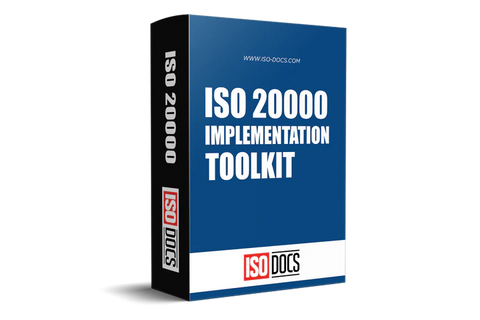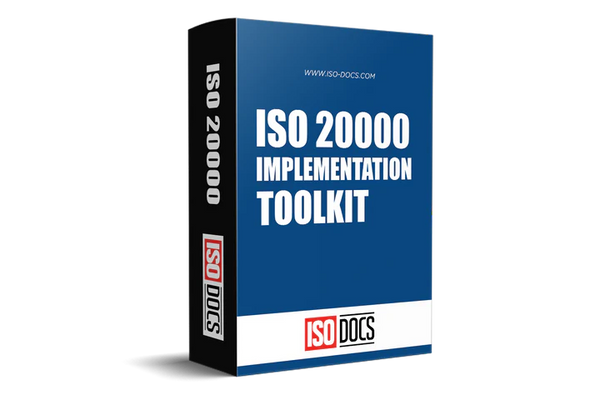A Comprehensive Guide to the Problem Management Process - ISO 20000

The Problem Management Process - ISO 20000 prevents the chances of incidents by investigating and finding the root cause, which makes it possible to lessen the impact of incidents and create stable structures.
What is the Problem Management Process?
Problem Management is a vital component of Information Technology Service Management (ITSM) that manages ITSM's schedule and infrastructure by identifying and reducing problems. This process swiftly spots problems and creates practical solutions to minimise their impact on IT services and enterprise operations. Problem management helps find gaps in the IT network that leads to difficulties and hindrances in IT functions and customer satisfaction.
IT services are essential for all organisations and industries, and problem management recognises and eliminates the source of incidents that compromise their functions. As a core part of ITSM, problem management solves the questions of 'What?', 'Where?' and 'How?' by monitoring, assessing, and reporting incidents and problems. In addition to identifying and resolving problems, problem management also understands the cause, pattern, and behaviour of an incident to prevent it from recurring.
Merely identifying the source of problems is not enough; a sturdy framework is needed to solve them and ensure IT services function correctly. In ITSM, the problem management process works across multiple platforms, such as IT, software, applications, and security, to implement problem-solving and incident elimination plans.
What Does Problem Management Do and Who Is It For?
Problem management works alongside and is integrated with incident management and change management to improve brand value and enhance the quality of IT services. Problem management's primary role is to reduce the impact of incidents on organisational projects and stop them from recurring.
Problem management has two main functions, such as:
Improve Organisation
The problem management process implements different ITIL processes, such as change management, incident management, and availability management processes, to build an organised network that adapts to constantly evolving technological advancements.
Reporting and Documentation
Problem management identifies and eliminates incidents and generates a comprehensive report on the problems, their sources, the elimination process, and the overall procedure duration. A proper account allows organisations to compare their problem files, recognise gaps, and find better and quicker ways to bridge the gap and solve the vulnerabilities in IT functions.
In addition to facilitating the documentation process and improving organisation, the problem management framework serves various functions, including:
● Reduce service downtime and outages
● Prevent network disruptions
● Improve availability of IT services
● Boost IT service quality
● Decrease incident elimination duration
● Build a productive environment
● Optimise IT tools and resources
● Easy user navigation
● Cost-efficiency
● Increase customer satisfaction
Key Objectives of the Problem Management Process

The primary objective of the Problem Management Process - ISO 20000 is to create an organised framework to assess IT operations, identify the weak areas that impact service level agreements, and monitor problems that have the potential to disrupt one or more IT services. To enhance IT services, ensure customer satisfaction, and prevent them from recurring, the problem management process works in three steps:
Identifying Problems
Problem management spots disruptions and vulnerabilities by analysing problem records and patterns, deleting problems that occur frequently and repeatedly, forming a problem behaviour report, and communicating with higher management, partners, and internal and external teams and experts to study extensive documents.
Controlling Problems
The problem control stage requires analysing and reporting common and frequent errors across workspaces. Similar to incidents in incident management, problems encountered in the problem management process are divided into different categories according to their risk rates, frequency, and potential impact. Problems that fall under the 'critical' or 'highly severe' categories are prioritised and attended to first, as they have a high chance of affecting IT services and operations.
Problem management follows a holistic framework due to the probability of problems having interconnected and layered causes that involve different ITSM processes. Interrelated root causes may create obstacles in getting rid of problems, which is why problem management considers all possibilities, from the source and strategies to the duration and nature of the problem.
Handling Error Rate
One of the main components of the problem management process is its error control tool. Error control applications handle recurring and common errors and study them to design permanent problem elimination techniques. To devise a permanent fix, the problem management team considers the nature of the problem, availability of resources, risk analysis, losses, and advantages.
Problem management conducts regular assessments of identified yet unsolved problems and studies their impact on user satisfaction, IT service maintenance, the effectiveness of the solutions, and overall expenditure. Every time a problem is analysed, the problem management team compares its effectiveness to previous reports and creates new and improved plans accordingly.
Why is Problem Management Important?
Problem management process implementation benefits organisations and individuals who work in service and IT management. Almost every company, irrespective of the industry, requires a healthy IT structure to boost its business and ensure user satisfaction. Problem management provides a plethora of benefits, such as:
Preparation and Productivity
Using the problem management process allows IT teams and enterprises to prepare themselves for future problems in IT services and equip themselves with the appropriate tools and techniques. Problem management's best practices help organisations analyse, adapt, and respond quickly, increasing productivity.
Cost Management
Handling problems involves a large set of resources, money, and time. Organisations spend hours fixing vulnerabilities in their services, which exhausts resources, wastes time and results in unjustified expenses. Problem management saves time and money by identifying and resolving problems early on.
Increase User Satisfaction
In organised framework reduces problems in operations, making customers happy and satisfied. Unlike a weak IT structure, problem management decreases problem recurrence, reduces service downtime, and allows customers to work with zero interruptions.
Wrapping Up
Problem Management Process - ISO 20000 is an essential application to keep IT services running smoothly and comfortably. Problem management designs an effective and efficient plan to locate and eliminate problems, increasing productivity and reducing user problems.



